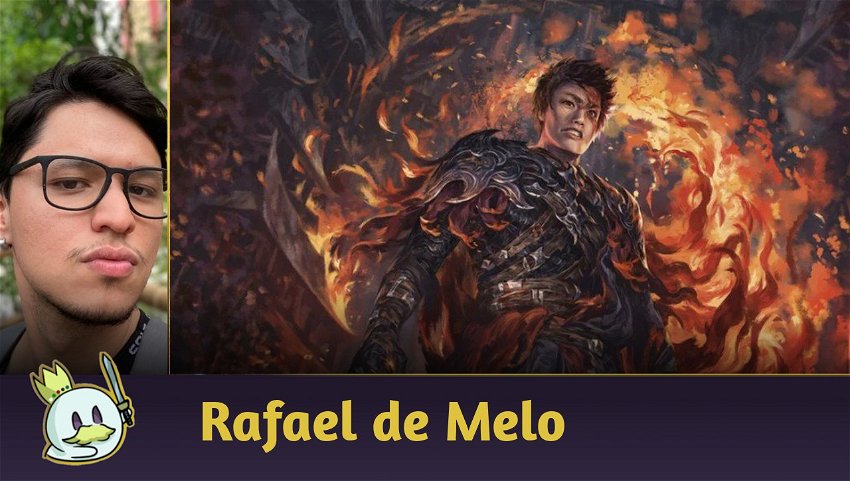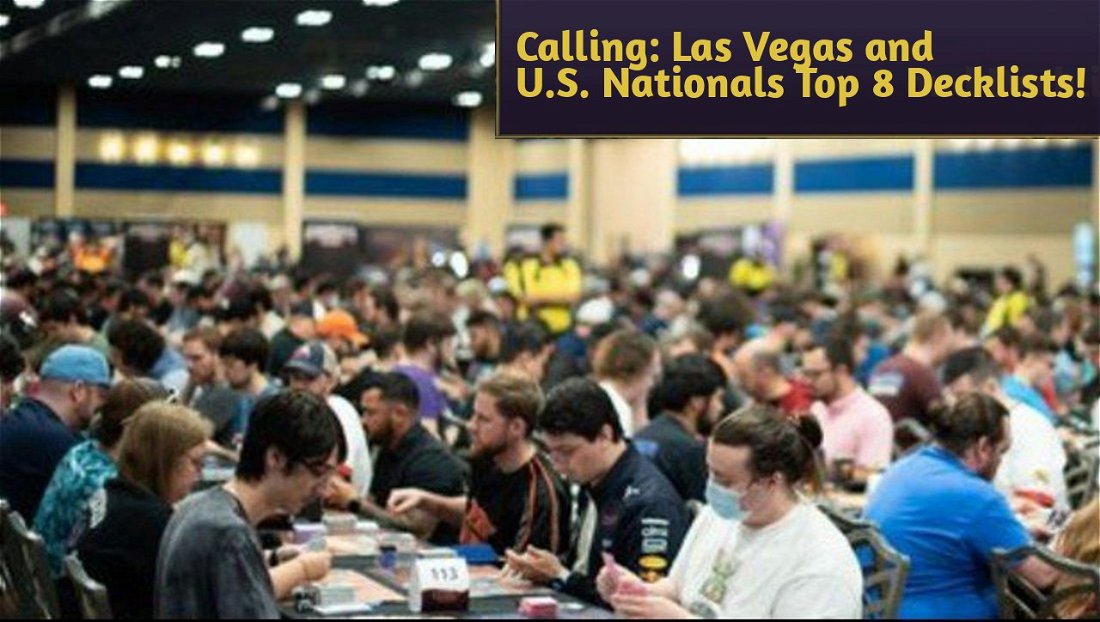Introduction
One of the first classes in Flesh and Blood was the Ninja class. In those first few days, this class' idea was to play a sequence of certain cards, in which each cared about the previous card played, and there were also a number of defensive tools, which made this class quite defensive when needed.
With the latest sets, the Ninja cards became more and more aggressive, and, with the Uprising set, a new ninja brought to life what it would look like if the class was super aggressive.
For that reason, today we'll discuss Fai, the most aggressive draconic ninja we have in the game.
Fai's Idea

Fai is the Uprising hero which came alongside Dromai and all the Iyslander support. As both heroes focused on optimizing their decks for more Control versions, Fai went in the opposite direction and formed an extremely aggressive deck which tried to finish the game as fast as possible.
Fai's ability allows us to start the game with a Phoenix Flame in the graveyard, and, with its other ability, we pay three resources to place a phoenix from the graveyard in our hand; however, it is possible to pay less resources as the combat chain stretches, encouraging us to be aggressive, get the phoenix for "free" from the graveyard and deal even more damage.
So, let's analyze the precon deck and progress it to transform this ninja into a real threat to our opponents.
The Precon
The precon really shows the hero's idea: recursive cards which allow for a long cadence of plays. We can divide the cards in the deck (and this division will stay throughout the article) into three types:
- Attacks that start the combat chain;
- Attacks which prolong the combat chain;
- Attacks which finish the combat chain.
Besides that, the precon deck is careful about the number of draconic cards needed to reduce Fai's ability cost as much as possible, which shows how well it is built.
The Beginning of the Turn
To start the combat chain, we need attacks that naturally have Go Again, and the precon has many cards in that sense:

Most cards here are "vanilla" attacks (which don't have any relevant ability) with the role of being sources of pure damage, but with Go Again to keep the sequence of attacks, and we'll notice most cards are in that style.
Brand with Cinderclaw (1), Dust Runner Outlaw (1), Rebellious Rush (1) and Ronin Renegade (1) will be our main attacks which we'll use at the beginning of the turn with the best cost/benefit, but they won't be the only ones.
Brand with Cinderclaw (1) can help the next attack reduce Fai's ability in case it isn't a draconic card. Flameborn Retribution, Flamecall Awakening and Inflame have the best conditions to get a Phoenix Flame, but they can also be used to start the turn with a mid hand.
The Middle of the Turn

Some attacks have conditions to get Go Again, but their values regarding cost, power and defense justify them being in this deck. Even the weapon Searing Emberblade fits into this situation, besides the other attacks, Cinderskin devotion (1), Lava Vein Loyalty (1) and Blaze Headlong.
Due to the conditional Go Again, starting the turn with these attacks will cause it to end - once you do, you won't be able to get the action point back. However, there are ways to go around that when we draw bad hands with not that many options.
The End of the Turn

The last two attacks here won't be used to finish our turn as they don't have Go Again, but they close it with very reasonable damage. Rise Up, in a perfect situation, can be an attack with 7 power and Dominate, and Flex (1) can be a six power attack.

Besides the aforementioned Searing Emberblade, Sash of Sandikai is an excellent addition as it is a faster Fyendal's Spring Tunic or an instantaneous Blossom of Spring.
Hope Merchant's Hood allows us to fix hands with too many blue cards or very heavy hands, and Heat Wave can grow the phoenixes on big turns.
The precon is as simple as that. Lots of aggression with a few attacks with on-hit effects and a long combat chain.
First Upgrade
As every precon, it has its problems. So, let's try to address the following problems with budget cards:
- The deck doesn't have good turn finishers;
- The equipment makes sense against another Uprising deck (Dromai's precon), but in a broad meta it isn't good;
- We're missing cards with relevant on-hit effects;
- The deck's curve is relatively high, so we need to add cheaper attacks;
- Some attacks have conditions which are very hard to fulfill to extract their full value.
Here, let's try to optimize the deck, mainly setting out to lower its total cost, but without losing the efficiency of being aggressive.

First, let's add a few cards with on-hit effects which are more threatening.
Mounting Anger (1), Soaring Strike (1) and Rising Resentment (1) have similar effects, in which each gives us a bonus for the exiled attack. The advantage to using these cards is forcing your opponent to block because these attacks have an on-hit effect.

Another incredible card we'll add to the list is Spreading Flames. With many exceptions, it is a sort of Stubby Hammerers in an attack, with which we can grow the next attacks, and, as the combat chain grows, it is more guaranteed that the attacks will also grow.
It is important to stress that adding one more power to attacks with three power (totaling four power) makes them excellent breakpoints, which your opponent won't be able to completely prevent from dealing damage with only one card in hand, and that will be very relevant for the more competitive version with Mask of Momentum.
With the addition of these enhanced attacks and a cost reduction, we'll now talk about better turn finishers.

Salt the Wound is the only non-draconic attack in the list, but that won't be a problem as it is the best finisher and as it punishes opponents which don't block their attacks, easily transforming its two power into five or even six.
Alongside that, Lava Burst can easily be a threat with five power, once we have a long combat chain, and Breaking Point, despite having one cost, can be a type of Command and Conquer. At certain times, the ability might not be relevant, but its cost-to-benefit ratio is quite reasonable in this list.

As the only non-attack card, Razor Reflex (1) is a classic in more aggressive lists to guarantee on-hit effects, deal more damage or even save attacks from your hand which don't have Go Again, and here any attack is a target for the reaction.

For equipment, a slight change. By only taking out Quelling Slippers, we'll add Snapdragon Scalers, both as it can grant Go Again to any attack in your list and as it can save you from a hand which doesn't have any attacks which can start the combat chain (which means, no attacks with natural Go Again).
To fit in these changes, the following cards will be taken out:
- Flameborn Retribution, Flex (1), Rise Up, Stoke the Flames and Trade In (1), as they have hard conditions to fulfill or because they don't fit in the deck's strategy;
- Inflame, because its power and defense are very low, with an effect which is not that rewarding to make up for these flaws;
- Wounding Blow (3), as it is a card which doesn't fit in the strategy well;
- Quelling Slippers, as it may be a bit too niche against Dromai.
Competitive Version
Now, let's build a list with the best tech possible for this deck.
The most drastic change will be for equipment, which, besides including some legendaries, we'll also include Harmonized Kodachi for a strategy more focused on extracting the most out of Mask of Momentum than focused on presenting massive damage.

Mask of Momentum is the best head equipment in any situation. Its effect forces your opponent to always worry about blocking in ways that prevent extra draws. Thanks to the possibility of countless breaking points, the list can consistently deal damage to the opponent, and, consequently, allow draws.
Tiger Stripe Shuko not only is an excellent defense as it also adds one more attack power to an attack (usually this one being Phoenix Flame), but also because, as we've seen so far, adding more power to small attacks is everything this list wants.
Another observation is the option of not using Fyendal's Spring Tunic. As games are very fast (many times decided before turn three), there is no time to place counters, which is why we opt for Blossom of Spring for immediate value. However, the tunic will always be an option in case you want to use it. Another excellent option is Flamescale Furnace, due to its Temper ability, which can become relevant in matches in which you'll have to hold off the pressure from the opponent's side.
Harmonized Kodachi is an excellent option in matches which can stretch on and in case we intend to deal damage bit by bit. Besides that, sectioning the damage into multiple attacks makes it easier for Mask of Momentum's effect to happen. To also give you support for matches in which we'll use the small daggers, we'll also add in the deck Stab Wound, not only as it can chip a bit of health from your opponent, but also as it is a blue card with zero cost - activating the daggers' Go Again.

Just like any aggressive deck, the synergy of Belittle (1) with Minnowism (3) is almost mandatory. Being able to tutor a blue card not only activates Harmonized Kodachi's Go Again, but it is also another resource for your turn, and it saves hands with many one-cost attacks.
Another attack we've placed here is Double Strike. Its effect can seem confusing at a first glance, but, basically, we hit twice with it. That allows for longer combat chains and makes Mask of Momentum's effect easier to activate. This attack is also excellent to start your turn.

Lastly, two cards which are staple in any aggressive deck.
Enlightened Strike, besides all its versatility, here, particularly, can easily be paid with a Phoenix Flame which came back from the graveyard with Fai's ability.
Art of War is a key card, with which, most times, we'll choose to grant one more power to our attacks and exile an attack card to draw two cards, and deal as much damage as possible. Combined with Spreading Flames, Tiger Stripe Shuko and Mounting Anger (1), it might be a victorious turn.
To fit in these new tools, we'll remove the following cards:
- Breaking Point and Soaring Strike (1) as we use better threats;
- Red and blue Dust Runner Outlaw (1), and this way fit in the Belittle (1) and Minnowism (3) synergy;
- Razor Reflex (1), and add Art of War;
- Blue Ronin Renegade (3), add Stab Wound and make the interaction with Harmonized Kodachi better;
- Hope Merchant's Hood, Heat Wave and Sash of Sandikai.
Matchups and Tips for this Deck
Fai is an extremely aggressive deck, which is why we'll try to deal as much damage as possible in as fewer turns as possible. However, against certain decks, you must have a different approach, which is why we'll adapt:
- Nullrune Robe and Tide Flippers against Kano (this way having a total of Arcane Barrier 2);
- Using two Harmonized Kodachi instead of Searing Emberblade against opponents which have high-value blockers, both in their equipment and their cards, such as, for instance, Dash, Kassai, Cintari Sellsword, Dorinthea and Bravo.
And some tips for the deck:
- Sequencing is key, so try to play your attacks in the correct order;
- Block only when necessary;
- Don't be afraid to setup with cards such as Salt the Wound; Try to place them in the arsenal until you find a hand which allows a big turn;
- Searing Emberblade is a draconic weapon, and therefore it counts for the hero's ability;
Final Words
Just like other ninjas, Fai has attacks with a very cheap cost and low power, but the number of consecutive attacks makes it a deck that puts others against a wall.
Despite not being the best aggressive deck currently, Fai is an excellent option for sequencing and long combat chains lovers, besides being relatively easy to understand and play.
Thank you for reading and see you next time!














— Comentários 0
, Reações 1
Seja o primeiro a comentar